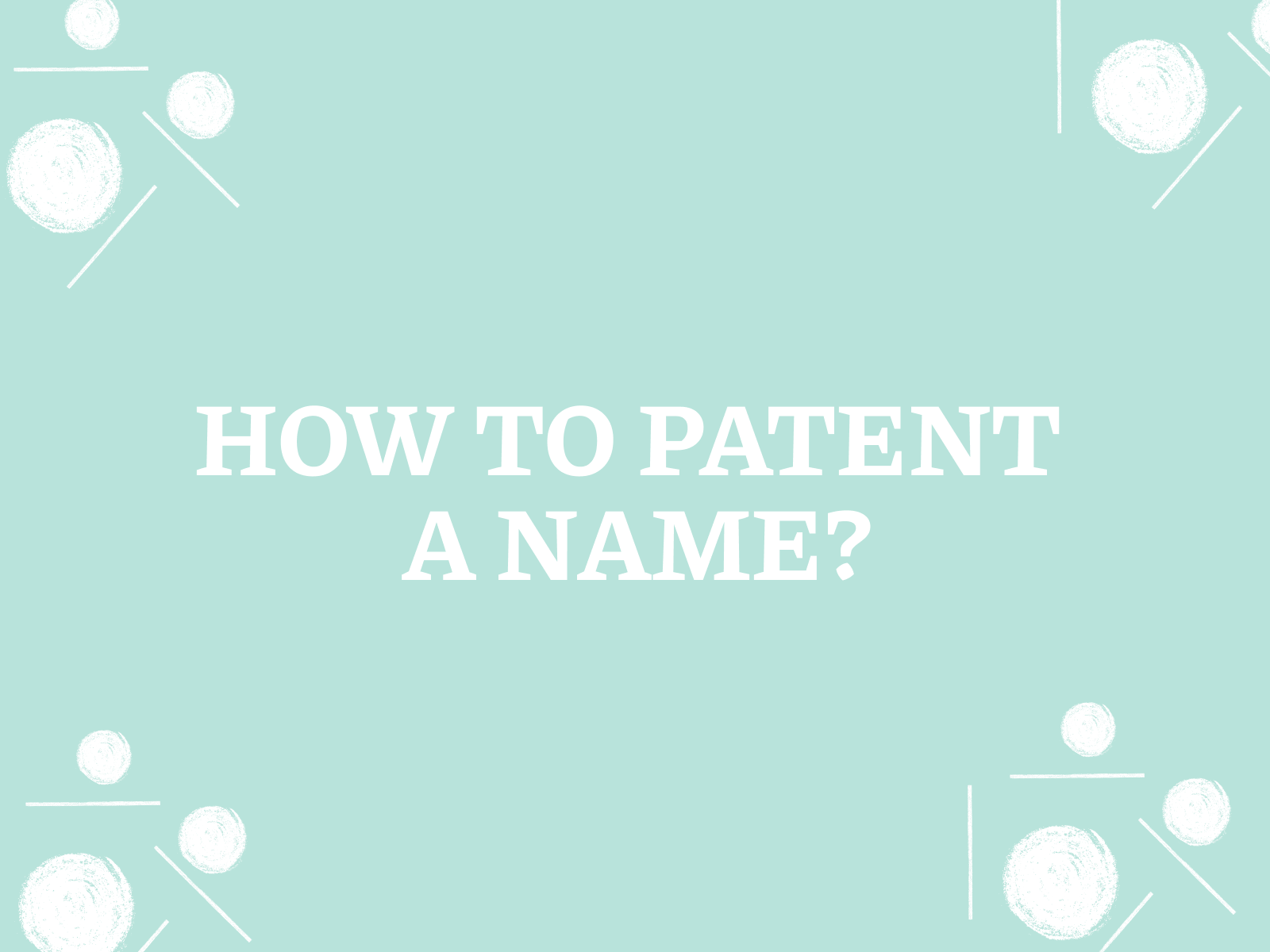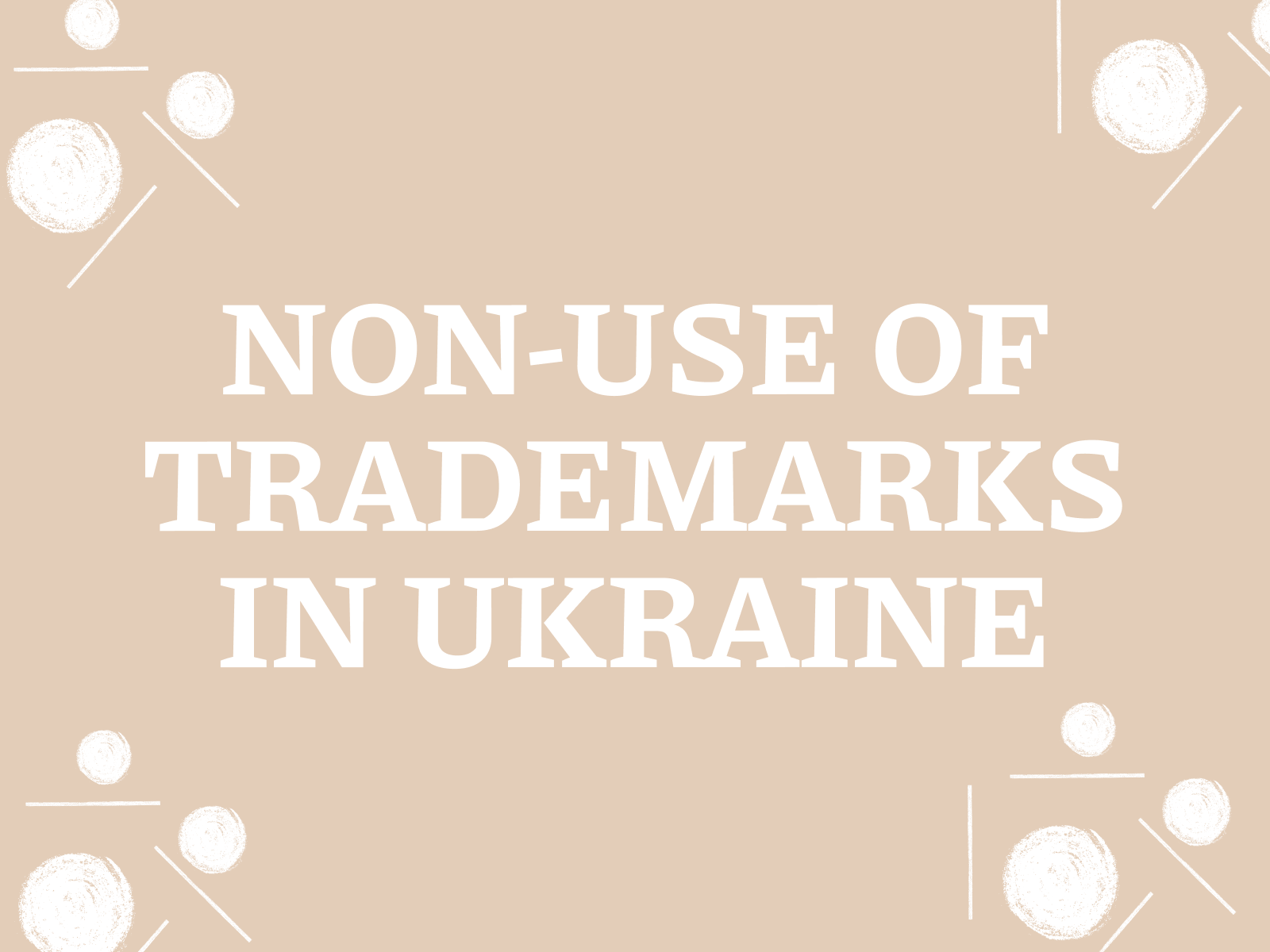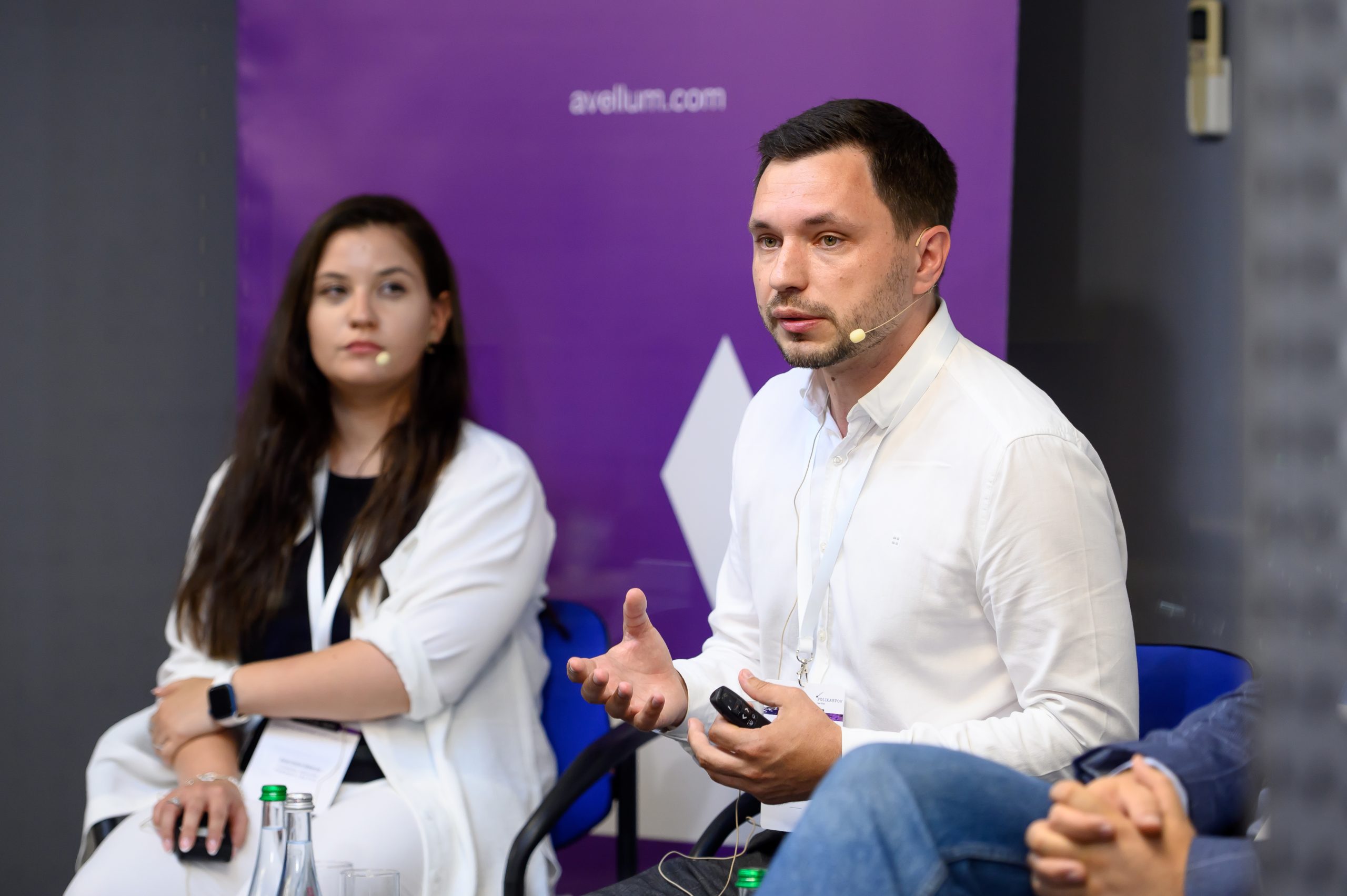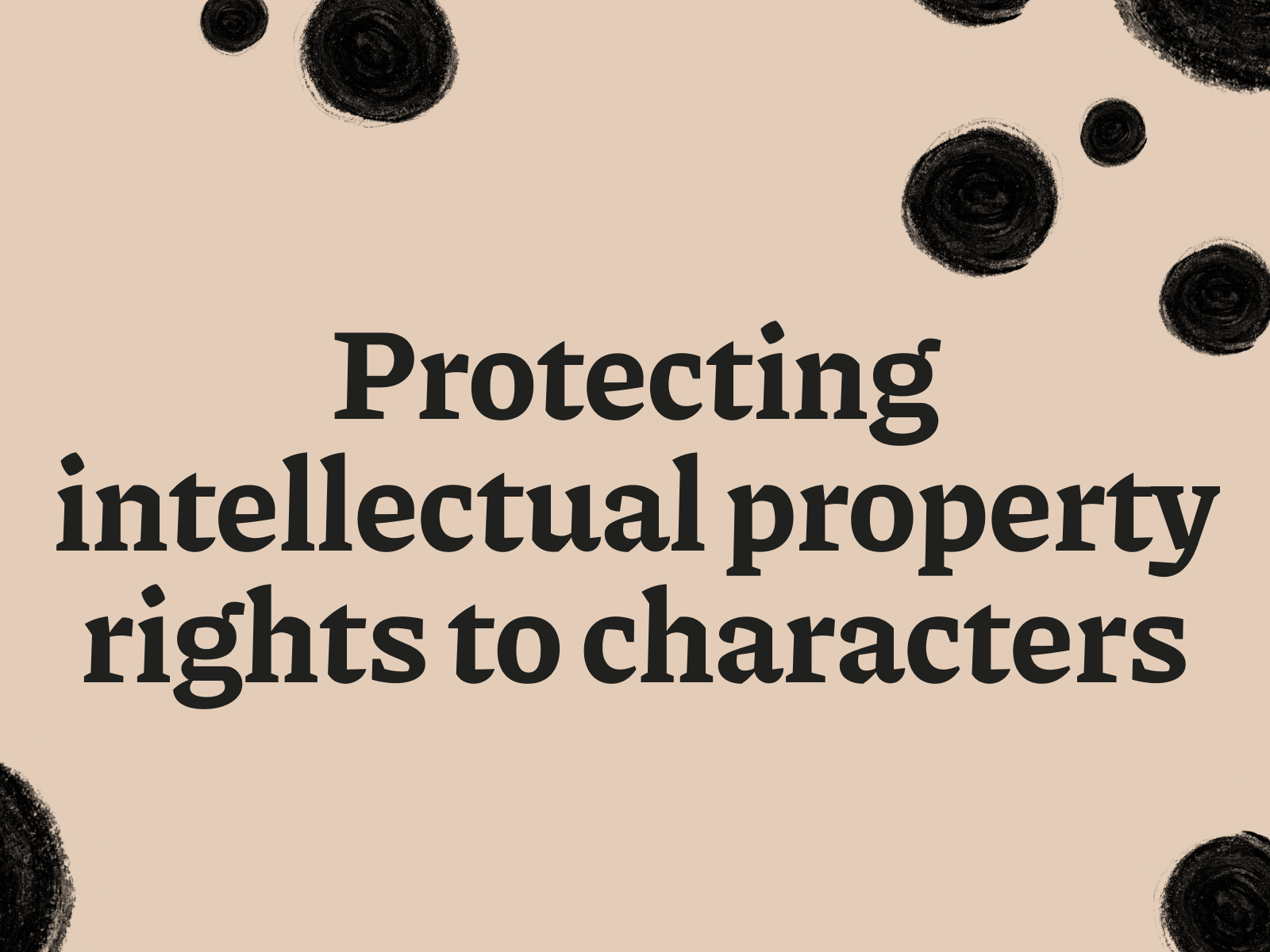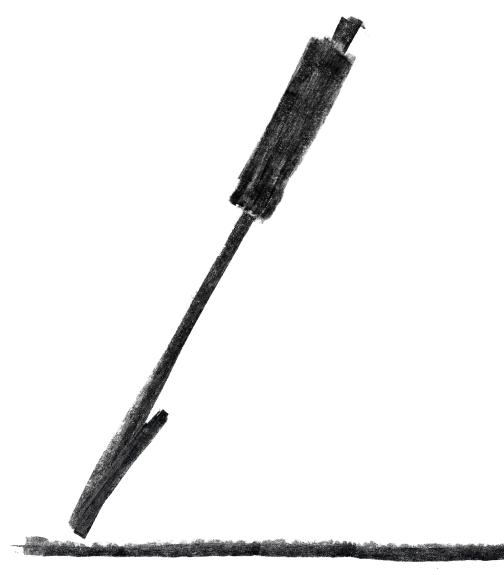Introduction
In the world of business and entrepreneurship, where competition is fierce, protecting intellectual property is not just important, it is vital. The name of your brand or product is not just a word or phrase, it is the face of your business, its unique identifier. Many people wonder how to patent a name, or how to get a name patent in Ukraine. It is important to understand that it is impossible to obtain apatent for the name by itself, but it can be protected by registering a trademark. What can be patented? This is a separate topic, but the name of a brand or product is not one of them. This article will become your guide to the world of proper legal brand protection, help you understand the intricacies of trademark registration and teach you how to protect your business from unfair competition.
Section 1: Trademark vs. Patent: What to choose to protect your name?
Before you start the process of protecting your intellectual property, you need to clearly understand which legal tool you need. The patent term for the name is a popular search query, but it is misleading. After all, a patent and a trademark are different legal mechanisms that protect different objects. Let’s take a closer look at this issue in order to make the right choice to protect your name.
1.1. What is a trademark and why do I need to register it?
A trademark is a designation by which consumers identify and distinguish your goods or services from those of other manufacturers. It can be a word, phrase, logo, symbol, image, color combination, or even sounds or smells – anything that can distinguish your brand in the marketplace. Registering a trademark is the key to your peace of mind and successful business development. Trademark protection will provide you with a number of benefits, including
- Exclusive right to use. Only you will have the right to use the registered trademark to identify your goods and services in a particular class of the International Classification of Goods and Services (ICGS).
- Protection against unfair competition. You will be able to prohibit others from using similar designations for goods or services that may mislead consumers.
- Increase competitiveness. A trademark becomes an asset of your business and can be sold or transferred for use under a license agreement.
Examples of successful trademark use:
- Apple: the logo of a bitten apple is instantly associated with innovative and stylish gadgets.
- Coca-Cola: the unique font and red color of the packaging make this drink recognizable all over the world.
- Nike: the”Swoosh” check mark symbolizes movement and sports spirit, which attracts millions of consumers.
Registering a trademark is a strategic decision that will help you build a strong brand and protect it from illegal use.
1.2. Name patent: when is it possible?
Many people mistakenly believe that any word or phrase can be patented, including brand names, slogans, or domain names. In fact, this is not entirely true. A patent is a protection document that grants the exclusive right to use, sell and manufacture exclusively an invention, utility model or industrial design.
What about the name?
The name itself cannot be patented. However, there are certain nuances. A patent can be obtained for:
- The technology that underlies a product or service with a specific name. For example, if you have developed a unique formula for a drink and called it “Energy of Life,” you can patent the formula.
- Invention, which has a specific name. Suppose you have created an innovative gadget and named it “SmartLife”. A patent can be obtained for the technical solution underlying the gadget.
- Design, used in products with a specific name. For example, if your clothing brand is called “FashionStar” and you have created a unique print design for T-shirts, it can be protected by a patent.
So, while it is not possible to obtain a patent for a name directly, you can protect your intellectual property by registering a trademark or patenting the elements that make your product or service unique.
Section 2: A step-by-step guide to registering a trademark in Ukraine
So, you have decided to take the important step of registering your own trademark. Congratulations! This is a wise decision that will protect your brand and give you exclusive rights to use it. But how do you register a trademark in Ukraine? Is it difficult? How long does the process take? This section is your step-by-step guide to the world of trademark registration. We’ll go through each step in detail to make the process clear and simple.
2.1. Stages of trademark registration.
The process of trademark registration in Ukraine may seem complicated and confusing at first glance. In fact, with the right approach and understanding of all the stages, this task is quite realistic. Here is a detailed description of each stage:
- Trademark search.
Before you start the registration process, you need to make sure that your future trademark is unique and not similar to the already registered or filed trademarks.
- How to check if the name is patented (the term “patented name” is used here in a colloquial sense, as we remind you that names are not patented but registered as trademarks). For this purpose, a similarity search is conducted in the open databases and other resources.
This stage is crucial as it will help to avoid possible refusals and litigation in the future.
- Preparation and filing of the application.
After a successful search, it is time to prepare an application for trademark registration. It should contain a clear description of your future trademark (verbal, pictorial or combined) and a list of classes of the Nice Classification in which you plan to use the trademark.
- Filing an application with the UAPTO.
An application for trademark registration should be filed with the UAPTO in person or sent by mail.
- Formal and substantive examination.
The submitted application undergoes two examinations:
- Formal examination: checks the correctness and completeness of the documents.
- Substantive examination: the trademark itself is analyzed to determine whether it complies with the requirements of the law and whether there are no identical or confusingly similar trademarks already registered or filed for registration.
- Registration and issuance of a certificate.
If the examination is positive, your trademark is registered in the State Register of Trademarks of Ukraine. You receive a certificate confirming your exclusive rights to use the trademark.
Get help from specialists
Considering all the subtleties and nuances of trademark registration, we recommend that you contact experienced lawyers specializing in intellectual property.
- Professional assistance in trademark registration will ensure correctness at every stage, minimize the risks of rejection and save you time.
In the next section, we will take a closer look at the required documents and registration deadlines.
2.2. Required documents and registration deadlines
To successfully register a trademark in Ukraine, it is important to collect and submit the entire package of required documents in a timely manner.
List of documents for trademark registration:
- Application for trademark registration (in the prescribed form).
- Trademark image (in the specified format and size).
- A list of goods and/or services for which the applicant wishes to register the trademark, grouped by classes of the Nice Classification.
- A document confirming payment of the application filing and examination fee.
- A power of attorney if the application is filed by the applicant’s representative.
Terms of trademark registration:
It is important to note that due to the martial law in Ukraine, the trademark registration period may be longer than usual. Currently, the process can take from 18 to 22 months. This period may vary depending on the workload of the Ukrainian National Research and Development Institute, the presence of comments during the examination process, etc.
Possible reasons for refusal:
- Presence of an identical or confusingly similar trademark already registered or filed for registration in Ukraine.
- Insufficient distinctiveness of the trademark from other designations.
- Use of elements in the trademark that contradict public order, principles of humanity and morality.
It should be understood that the trademark registration process requires attention to detail and knowledge of the law. Therefore, by contacting professional lawyers, you will receive quality assistance at every stage and avoid wasting time and money.
Section 3: Cost of patenting and legal assistance
The question of cost is certainly one of the key issues when registering a trademark. Many people are interested in how much does it cost to patent a logo, what factors affect the price and whether it is possible to save money by doing everything yourself. In this section, we will cover the main aspects of pricing for trademark registration services and explain the benefits of hiring professional lawyers.
3.1 Pricing for trademark registration services.
The cost of trademark registration in Ukraine is not fixed and depends on many factors. Among them:
- Type of trademark: verbal, pictorial or combined.
- The number of classes of the Nice Classification: the more classes of goods and/or services you want to protect, the higher the cost.
- Type of examination: regular or expedited.
- The need for additional services: for example, conducting a preliminary trademark search or appealing a refusal to register.
- Pricing policy of the law firm: different companies may offer different prices for their services.
Approximate prices for trademark registration services in Ukraine (as of 2024):
- Preliminary trademark search: from UAH 3000.
- Preparation and filing of an application for registration: from UAH 5500 (excluding state fees and taxes, which amount to UAH 2900).
Please note that these are only indicative prices. The final cost is formed individually in each case.
Although you can try to register a trademark on your own, we recommend that you contact a lawyer specializing in intellectual property. This will help you avoid many mistakes at the initial stages and save you time and money in the future.
- Legal support for trademark registration will be provided to you:
- Professional assessment of the chances of registering your trademark.
- High-quality preparation of all necessary documents in accordance with the requirements of the law.
- Representation of your interests at the Ukrainian National Intellectual Property Office and other authorities.
- Support of the registration process at all stages.
3.2. Advantages of turning to professionals
Registering a trademark is a crucial step for any business. The successful completion of this process affects the protection of your brand and the ability to develop your business in peace. However, given all the intricacies of the legislation and the nuances of interaction with the Ukrainian National Intellectual Property Office, independent registration can be quite a challenge.
That’s why many entrepreneurs prefer to turn to law firms specializing in intellectual property.
Advantages of professional support:
- Saving time and effort: You don’t have to understand the legal requirements and procedures on your own.
- Minimizing risks: Experienced lawyers know all the nuances of trademark registration and will help you avoid mistakes that can lead to refusal.
- Professionals will do everything possible to ensure that your trademark is successfully registered with the Ukrainian Trademark and Trademark Office.
- Legal protection: In case of any disputes, lawyers will protect your interests in court.
If you value your time and want to be sure of the successful registration of your trademark, contacting professional lawyers is the best solution! For example, contact Polikarpov Law Firm – we will be happy to help you protect your business!
Conclusion.
Protecting intellectual property is not just a legal aspect, but a key to the successful and sustainable development of your business. Although it may seem like a complicated process, trademark registration is absolutely necessary in order to protect your brand from unfair competition and to maintain the exclusive right to use it.
Remember that the use of an unregistered trademark carries many risks, up to and including a ban on activities and compensation for damages to the right holder of an identical or similar trademark.
What should you do if you find out that someone is using your trademark without your permission? Do not waste time and contact qualified lawyers. A timely response will help protect your rights and avoid serious financial losses.https://polikarpov.legal/en/trademark-registration/
Is it possible to patent a clothing brand name in Ukraine? What steps should be taken
In fact, it isimpossible to patent a clothing brand name in Ukraine. Patenting applies to inventions, utility models, and industrial designs, and a brand name does not fall into these categories.
However, you can protect your clothing brand name by registering it as a trademark. A trademark is a designation that identifies your products or services and distinguishes them from competitors.
Here are the basic steps to register a trademark:
- Checking for uniqueness: First of all, conduct a database search to make sure that an identical or similar brand name is not already registered by another company in Ukraine. This will help to avoid refusal of registration and potential lawsuits in the future.
- Preparing and submitting an application: Prepare an application for trademark registration, indicating the brand name, the class of the International Classification of Goods and Services (ICGS) that corresponds to the clothing, and other necessary data. Submit the application to Ukrpatent (UkrNDIP).
- Examination of the application: Your application will undergo a formal examination for correctness of execution and substantive examination, during which your name will be checked for compliance with legal requirements and absence of similarity with other trademarks.
- Obtaining a certificate: If the examination is successful, Ukrpatent will register your trademark and issue you a certificate confirming your exclusive right to use this clothing brand name in Ukraine.
Important: The trademark registration process has many nuances. We recommend that you contact lawyers specializing in intellectual property for professional assistance and guaranteed results.
How much does it cost to register a trademark for an online store in 2024? Can I do it myself?
The cost of registering a trademark for an online store in Ukraine in 2024 is not fixed and depends on several factors:
- Type of trademark: registration of a verbal trademark (name) will cost less than a combined trademark (logo and name).
- Number of classes of the Nice Classification: the more classes of goods/services your application covers, the higher the costs will be. For an online store, class 35 (advertising, marketing, online sales) is usually chosen.
- Processing time: the standard registration procedure takes about 18-22 months, but there is a possibility of expedited processing for an additional fee.
- Legal support: independent registration will be cheaper, but contacting patent attorneys will reduce risks and save you time.
Estimated costs of TM registration for an online store in 2024:
- State fees: from UAH 2900 (depends on the number of classes of the Nice Classification)
- Patent attorney services: from 5500 UAH (depending on the complexity of the application)
Can I register a TM on my own?
Theoretically, yes. You can study the legislation, prepare documents and file an application with Ukrpatent on your own.
However, this carries certain risks:
- Refusal to register: due to incorrectly executed documents or failure to take into account certain legal nuances.
- Loss of time and money: you will have to go through the registration procedure again.
We recommend that you contact patent attorneys to help you:
- Conduct a qualitative search for similar trademarks.
- Competently prepare and file an application.
- Interact with Ukrpatent at all stages of registration.
- Protect your interests in case of disputes.
Weigh all the pros and cons before deciding to register a trademark on your own.
What is the difference between a patent and a trademark? What is the best way to protect the name of my new product?
Although the terms “patent” and “trademark” are often used in the context of intellectual property protection, they refer to different objects and have different legal protection mechanisms.
A patent grants the exclusive right to use, sell and manufacture a technical solution, such as
- Invention: a new product, process or technology that has an inventive step and industrial applicability.
- Utility model: a new design solution for a product that has industrial applicability.
- Industrial design: an artistic and design solution for a product that determines its appearance.
A trademark protects the designation by which consumers identify and distinguish your products or services. It can be:
- Verbal TM: brand name, slogan, unique phrase.
- Visual TM: logo, graphic symbol, label.
- Volumetric TM: the shape of the product, its packaging.
- Sound TM: a melody, a sound signal.
What is the best way to protect a new product name?
The name of a product cannot be patented as such. A patent can be obtained for thetechnical solution underlying the product or its design.
To protect the name of the new product, we recommend registering it as a trademark (TM).
A TM grants you the exclusive right to use this name to identify your product and prohibit others from using similar designations. It will help you to:
- Create a strong brand: TM will make your product recognizable in the market.
- Protect yourself from competitors: no one can use your name without your permission.
- Increase business value: a trademark is an asset that can be sold or licensed.
Remember that registering a trademark is an important step for any business that will help protect your intellectual property and ensure the success of your product on the market.
What documents are required to register a trademark in Ukraine? How long does this process take?
In order to register a trademark (TM) in Ukraine, it is necessary to submit a package of documents to Ukrpatent (UkrNIPI), which includes:
- Application for TM registration:
- Filled out in the prescribed form in Ukrainian.
- It contains information about the applicant (full name or company name, address, contacts), the trademark designation (verbal, figurative or combined), the list of goods/services for which the trademark is registered (according to the International Classification of Goods and Services – ICGS).
- Image of the TM designation:
- Provided in electronic format (JPEG, TIFF) and on paper.
- It must meet certain technical requirements for size, resolution, and color.
- Document confirming payment of the application fee:
- The amount of the fee depends on the number of classes of the Nice Classification under which the TM is registered and the chosen procedure of examination (regular or expedited).
Additional documents (if necessary):
- Power of attorney: if the application is filed by the applicant’s representative (e.g., a patent attorney).
- Priority document: if the applicant claims an earlier filing date (for example, if he/she previously filed a similar application in another country).
Terms of TM registration in Ukraine:
The standard procedure for TM registration in Ukraine can take from 18 to 22 months.
This period includes:
- Formal examination of the application (2 months).
- Substantive examination of the application (12-18 months).
- State registration of the TM and issuance of a certificate (2 months).
Important: registration periods may vary depending on the workload of Ukrpatent and the availability of examiners’ comments on the application.
Contacting patent attorneys will help speed up the registration process and avoid potential delays.
What if someone already uses a name similar to my trademark? Who should I contact for help?
Finding a company or product with a name similar to your trademark on the market can be a cause for concern and require immediate action on your part.
Here are the steps to take:
- Find out whether your rights have been violated:
- Compare the designations: carefully analyze the similarity of names, logos, packaging design, etc.
- Check the classes of the Nice Classification: to find out for which goods/services the infringer’s TM is registered. If the classes are different, there may be no violation, even if the designations are similar.
- Establish the priority date: Who was the first to use the disputed mark? The owner of a TM with an earlier priority date has stronger rights.
- Contact the infringer:
- Send a formal complaint: notify the infringer of your rights to the TM and demand that they stop using a similar designation.
- Offer a pre-trial settlement of the dispute: it may be a change of the name/logo by the infringer, payment of compensation, etc.
- If a pre-trial settlement is not possible, seek professional help:
- Patent attorneys: will provide advice on the protection of trademark rights, assist in the preparation of documents and negotiations with the infringer.
- Attorneys: will represent your interests in court if it is necessary to file a lawsuit for infringement of TM rights.
Where to go:
- The Appeals Chamber of Ukrpatent: considers disputes over trademarks in an administrative manner.
- The Commercial Court: considers claims for infringement of intellectual property rights, including those to TMs.
Remember:
- A timely response to an infringement is important! Ignoring the problem can lead to the loss of trademark rights and financial losses.
- Turning to specialists increases your chances of success! They have the experience and knowledge to effectively protect your rights.
- The Law of Ukraine “On Protection of Rights to Trademarks and Service Marks”. References
- Madrid Agreement Concerning the International Registration of Marks. References.

